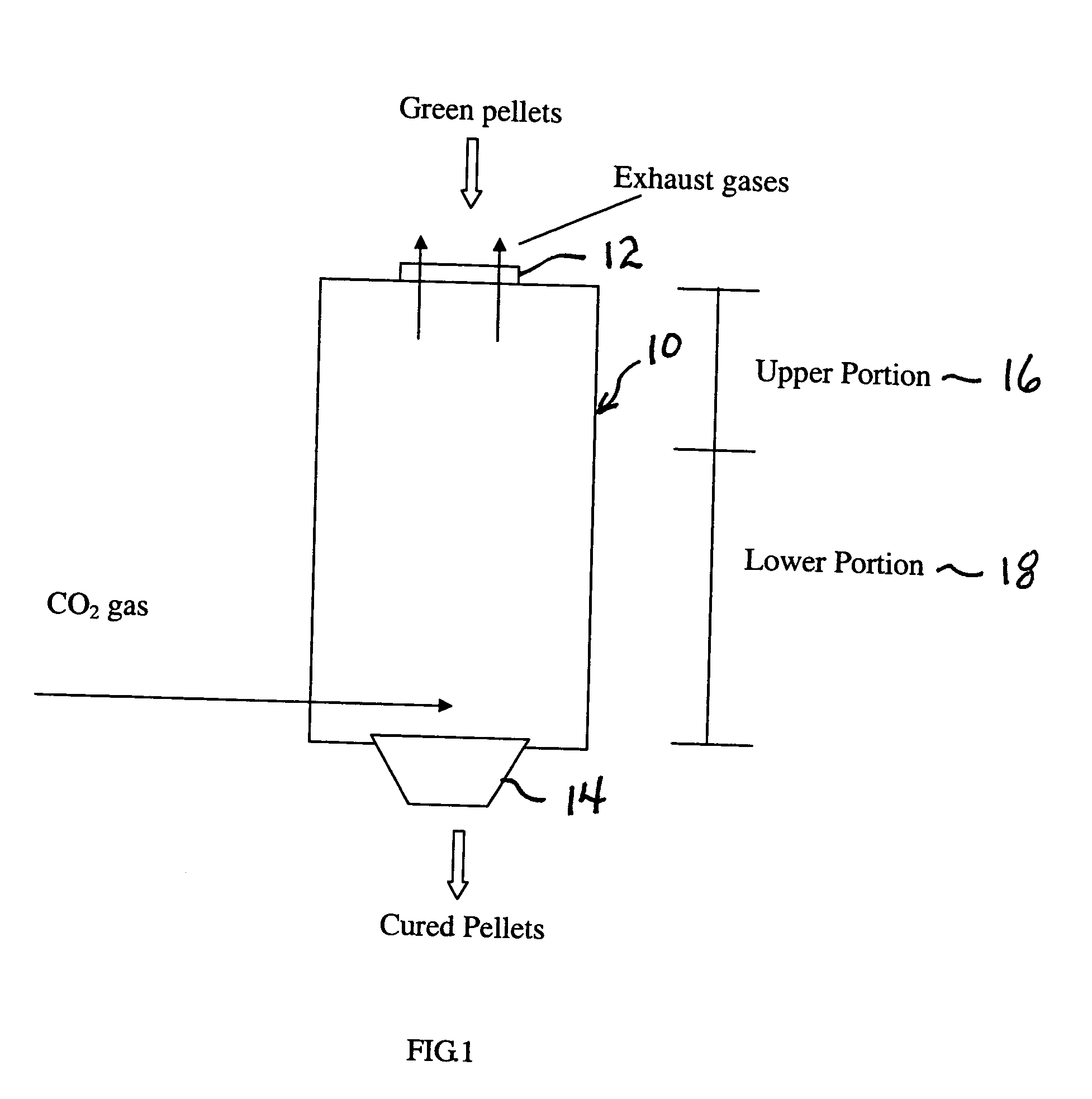Self-reducing, cold-bonded pellets
- Summary
- Abstract
- Description
- Claims
- Application Information
AI Technical Summary
Benefits of technology
Problems solved by technology
Method used
Image
Examples
example 1
After producing a mixture comprising by weight 67% iron ore concentrate, 20% anthracite coal and 13% binder, the mixture is placed into a balling disc and water added to the mixture to produce ball pellets with a moisture content of about 9 to 11%. Thereafter, the pellets are graded with roller screens to produce pellets having the size of 8-16 mm, and then the pellets are cured by the process of the present invention with hot-blast stove gas at a temperature of 150° C. and containing about 25% by volume carbon dioxide for about 96 hours. The dry pellet's main chemical composition by weight is as follows:
TFe*CaOSiO2Al2O3MgOC**45.48.37.02.53.314.2
The cold compression strength is 80 kgf / pellet. The start-of-softening temperature is 970° C. The pellets can be used as a charge for iron making in smaller blast furnaces and DRI furnaces or other applications.
example 2
Using the same process as Example 1, but changing the components of the mixture to by weight 75% iron ore concentrate, 13% coke breeze and 12% binder, the pellet's strength will be increased when compared with Example 1. The cured pellet's main chemical composition by weight is as follows:
TFe*CaOSiO2Al2O3MgOC**50.688.376.361.871.6810.66
The cold compression strength is about 100 kgf / pellet, and the start-of-softening temperature is more than 1000° C. The pellet can be used instead of sinter as a charge for iron making in large blast furnaces, and it will decrease the coke consumption by 238 kg per ton of pig iron.
Further examples of the main chemical compositions of the pellets by weight are:
TFe*CaOSiO2Al2O3MgOC**49.57.66.12.00.68.649.18.36.82.20.910.66
*Total Fe
PUM
| Property | Measurement | Unit |
|---|---|---|
| Temperature | aaaaa | aaaaa |
| Temperature | aaaaa | aaaaa |
| Temperature | aaaaa | aaaaa |
Abstract
Description
Claims
Application Information
 Login to View More
Login to View More - R&D
- Intellectual Property
- Life Sciences
- Materials
- Tech Scout
- Unparalleled Data Quality
- Higher Quality Content
- 60% Fewer Hallucinations
Browse by: Latest US Patents, China's latest patents, Technical Efficacy Thesaurus, Application Domain, Technology Topic, Popular Technical Reports.
© 2025 PatSnap. All rights reserved.Legal|Privacy policy|Modern Slavery Act Transparency Statement|Sitemap|About US| Contact US: help@patsnap.com

